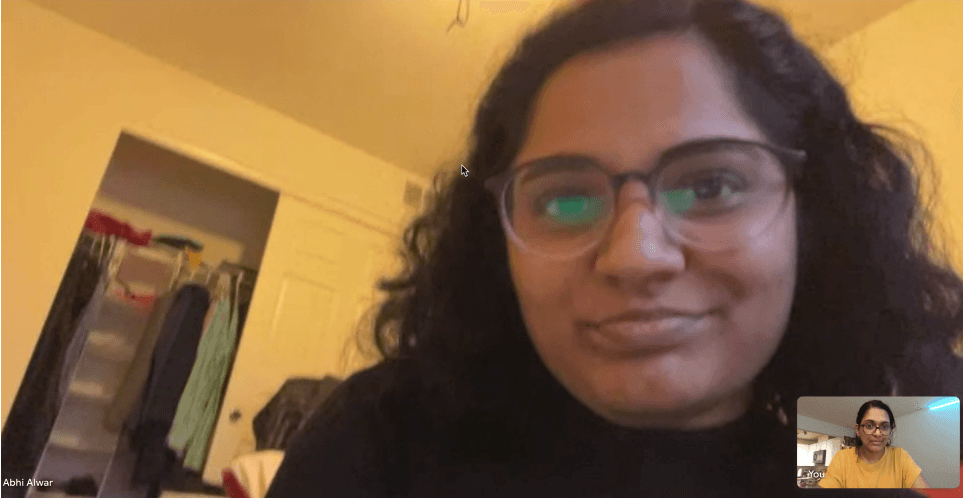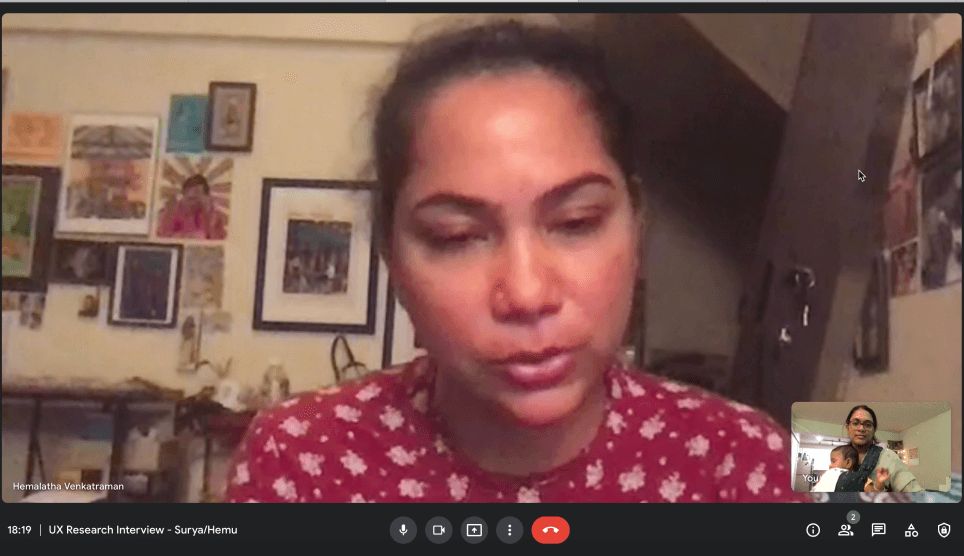Complete product redesign & growth
Workflow
UX Research
Synthesis
UI/UX Design
Usability Testing
My Role
UX Researcher
UI/UX Designer
Copywriter
Team
Ragoth Bala, Cofounder
Harish Visweswaran, Cofounder
Saif al Falah, Engineer
Ryan Sievert, Lead Designer
Brentos Fernandez, Creative Lead
Timeline
14 months
Launched in Aug 2022
Context
The Cumin Club is a Chicago-based direct-to-consumer food subscription service delivering authentic, affordable Indian meal kits that can be prepared in just five minutes. Operating across the US and India, the company experienced steady growth through word-of-mouth over three years and secured seed funding in 2021. To scale effectively, they undertook a comprehensive rebrand and sought a redesigned website to reflect their evolved identity and ambitious growth targets.
Business Goals
Establish consistent branding and messaging across all customer touchpoints to delight, comfort, and educate users about the cuisine
Expand the customer base, attracting those less familiar with Indian food culture
Improve website conversion rates by at least 1%
How might we create a cohesive, accessible brand experience that resonates with both new and existing customers and simplifies subscription flows?
Solution Overview
Transformed a basic website into a dynamic platform optimized for diverse customer conversion paths
Developed a comprehensive branded design system to ensure visual consistency and usability
Conducted iterative MVP launches based on user feedback and data analytics
In-Depth Research
I analyzed six leading D2C food subscription websites, applying heuristic evaluation principles to identify best practices and usability gaps. Additional insights were gathered from customer reviews across forums, highlighting the critical need for:
Easy subscription management, particularly the ability to effortlessly skip deliveries or cancel subscriptions
Clear, responsive follow-up processes
Seven target users were interviewed to explore attitudes towards food subscriptions and related frustrations. Synthesizing qualitative data with survey results through empathy mapping revealed core pain points informing design priorities.
Design Process
Working closely within the updated branding guidelines, I crafted high-fidelity prototypes emphasizing clear value propositions and visual cues. The design supports users entering the subscription flow from multiple marketing channels and ensures they understand the brand and product offerings intuitively at every step.
While the creative team led branding and aesthetics, I spearheaded functional design aspects, particularly the subscription purchase path. This collaboration yielded a strong, cohesive user experience, balancing brand storytelling with streamlined usability.
Initial high-fidelity prototypes were tested with current and prospective customers. Feedback was positive overall, though users felt the homepage lacked a compelling “wow factor” to draw them into the subscription experience.
In response, I secured founder buy-in on introducing ambient video backgrounds to elevate visual engagement. Building on this success, I proposed and executed a redesign of the homepage that better integrated user feedback and development feasibility considerations.
This improved homepage design was adopted for the MVP release and praised by both users and internal stakeholders.
Initial Homepage Design
Proposed Design for MVP
Hero Image replaced post-launch with temporary stand-in
Final Homepage design
Key Solutions
Initial usability testing revealed a critical problem: users found the homepage boring and unmemorable. Testing with both new visitors and existing customers showed no one felt excited or compelled by what they saw. Worse, many new users thought The Cumin Club was a restaurant or fresh food service like HelloFresh—they didn't understand they'd be receiving meal kits.
The Challenge
The creative team from our investor company had created visual assets and brand identity guidelines, but pressure existed to follow their exact implementation approach. Meanwhile, we had limited development resources and tight timelines.
My Solution
I proposed an approach that leveraged existing brand assets while designing our own homepage optimized for our constraints:
Vibrant color palette that grabbed attention and felt energetic
High-contrast typography hierarchy with clear, compelling copy
Ambient video background for the hero section showing what the product actually was—dispelling confusion about fresh food vs. meal kits
Subtle micro-animations on scroll to add life without overwhelming
Clean product photography lower on the page showcasing meal variety
This approach required collaboration with the investor's creative team to produce the video background, but gave us control over the overall design and reduced development lift.
Why It Was Selected
The founders chose my proposal because it could be built faster by our small dev team while still delivering the visual impact we needed. Blink tests and usability studies on the new design showed dramatically more positive reactions—users understood what we offered and felt excited to explore.
Launch and Iteration
The redesigned homepage launched as part of the MVP. However, the video background initially caused loading issues and performance problems. I quickly pivoted, replacing it with a rich static hero image that maintained visual impact while eliminating technical friction. We reintroduced the video once infrastructure could support it reliably.
The Problem
Every Cumin Club meal originally came with free associated sides—portioned servings of rice or rotis designed to serve two people. User feedback revealed a consistent pain point: many customers weren't using the sides at all. Meanwhile, the business absorbed significant costs providing these complimentary items to every subscriber.
The Solution
I redesigned the cart experience to make sides optional add-ons rather than automatic inclusions:
Marketplace integration: Users could browse and add sides from the main product catalog
Smart suggestions: When users populated their cart with meals, the system displayed associated sides as suggested add-ons—making it quick and intuitive to add complementary items before checkout
Separate pricing: Sides became individual purchases rather than bundled freebies
No subscription flow disruption: The core subscription journey remained unchanged; sides simply became an optional enhancement step for users who wanted them
Design Considerations
The challenge was presenting this change positively. Removing "free" items could feel like taking something away. I focused the design on empowerment and choice—users now had control over exactly what arrived in their box, reducing waste and personalizing their experience.
Impact
User feedback post-launch was positive—customers appreciated the ability to customize their orders and avoid unwanted items. While conversion rates remained stable, the change delivered significant financial relief for the business while satisfying a genuine user need. The design struck the right balance between business constraints and user preferences.
The Opportunity
User feedback consistently indicated demand for authentic Indian snacks and beverages. Many visitors came to the site expecting to find these products. The business saw an opportunity to expand the product offering and increase order value.
What I Designed
The Cumin Pantry featured sweet snacks, savory snacks, and various Indian teas and coffees. I designed:
New marketplace page: Complete product catalog with cards, descriptions, and imagery showcasing Pantry items
Strategic placement: Initially positioned at the end of the subscription flow—a "before you go" moment encouraging users to discover and add items
Cart integration: Seamless addition of Pantry items to recurring subscription boxes
Product differentiation: Clear visual and organizational separation between meals and Pantry items
Launch and Iterations
Initial user response was positive—this was something customers had wanted. However, early feedback revealed confusion: users weren't sure whether Pantry items were one-time purchases or would recur in their subscription box.
I addressed this with targeted copy updates clarifying that Pantry additions became part of the recurring subscription (since The Cumin Club didn't offer one-time purchases except for limited gift boxes). Once this confusion cleared, adoption increased.
Impact
The Pantry feature successfully increased average order value and contributed new revenue streams. While initial uptake was slower due to the subscription confusion, clear communication resolved user hesitation and drove engagement with the expanded product line.
MVP Launch & Technical Challenges
We launched the redesigned site in August 2022, immediately monitoring user behavior through Mouseflow, Hotjar, and Google Analytics. Unfortunately, the launch revealed significant technical issues that disrupted the user experience and threatened our success.
War Room Response
I worked on the ground with developers and founders, analyzing session recordings and analytics to pinpoint exactly where we were losing users. My rapid iteration approach included:
Simplifying flows: Rolled back to earlier, more stable design states to eliminate friction points
Replacing the video hero: Swapped the ambitious video background with a high-quality static image that maintained visual impact without performance penalty
Reducing micro-interactions: Temporarily removed subtle animations and effects to decrease technical complexity until core functionality stabilized
Resolution & Recovery
The most critical bugs were resolved within 2-3 weeks of intensive collaboration. Over the following four weeks, we watched conversion rates climb as user experience improved and confidence returned.
Metrics & Impact
Conversion Rate Improvement
Despite initial technical setbacks, the redesigned experience ultimately delivered strong performance improvements:
Baseline (old site): 3.0% conversion rate
Launch with bugs: 2.2% (temporary 0.8 percentage point decline)
Post-resolution stable rate: ~4.0% conversion
This represented a 33% improvement over the original site (1.0 percentage point gain), demonstrating that once technical issues were resolved, the design changes significantly improved user conversion.
Engagement Metrics
Analytics from Mouseflow and Hotjar showed measurable engagement improvements post-bug resolution:
Session duration: Increased 10%, indicating users spent more time exploring the site and engaging with content
Click-through rates: Improved 16% on key subscription flows, showing better navigation and clearer calls-to-action
User Retention
Bounce rates dropped 8% once technical issues were addressed and homepage visual improvements were deployed, reflecting stronger user retention and interest from the first impression.
Business Impact
Beyond conversion metrics:
Cart flexibility: Optional sides feature provided financial relief while satisfying user needs for customization
Expanded offerings: The Cumin Pantry created new revenue streams and increased average order value
Foundation for growth: The redesigned platform established scalable patterns for future feature development
Learnings
Balancing aspirational designs with MVP realities enables rapid releases that can be continuously refined through data-driven iterations. Knowing which features to include in initial launch versus defer for future development kept the project moving forward while maintaining quality.
Proactively advocating qualitative insights with stakeholders and conducting iterative testing strengthens design decisions and aligns products with real user needs. The homepage redesign succeeded because we validated concepts with users before committing to full development.
Early, detailed handoffs and ongoing communication with developers are crucial to smooth implementation and reducing costly revisions post-launch. Working closely with the engineering team throughout—not just during handoff—prevented misalignment and technical surprises.
When technical issues threatened launch success, rapid problem-solving and close collaboration with developers prevented disaster. Knowing when to simplify designs temporarily—and which elements were negotiable versus critical—enabled quick stabilization while preserving long-term vision.
Managing pressure from investor creative teams while advocating for designs optimized for our specific constraints and capabilities required diplomatic persistence. The homepage approach succeeded because I found a way to honor their brand work while solving our unique challenges.




















